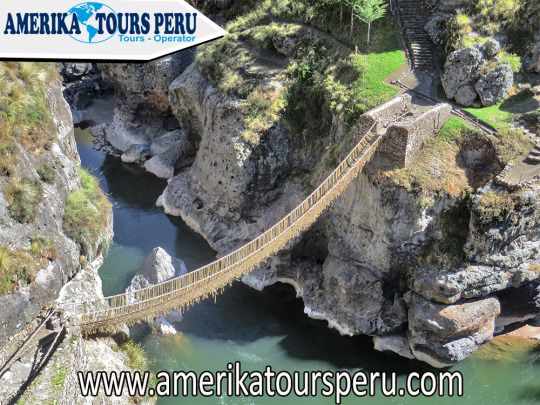Every first half of June, a bridge disappears to be raised again. It is that of Queshuachaca, in Quehue, the only one in the world made with fibers of the ichu plant, following the most ancestral Inca tradition.

Every time they talk to us about Cuzco, it is usual for our mind to travel to the wonderful Inca city of Macchu Pichu. However, this region of the Peruvian Andes not only stands out, as far as archeology is concerned, for this lost city, considered one of the wonders of Humanity. There are other places that are well worth a visit and, above all, the pleasure of marveling at their beauty.
This is the case of the Queshuachaca bridge, also known as Q’eswachaka. It is not a construction at the time of circumventing the canyon that forms the Apurimac River, in the district of Quehue, one of the main rivers of Peru. On the contrary, it is an attraction, while it is the last standing Inca bridge built with the ancestral technique of tracing rope of vegetable fibers. Specifically, it is made of ichu and q'oya (straw straw) sojillas, materials strong enough to allow it to be crossed over it without precipitating from the 50-meter drop on which it is suspended, between two boulders of one of the deep canyons of the region.
With a length of approximately 30 meters, for just over a meter wide, its stability is responsible for thick irons stuck to huge rocks at each end, where the ropes that make up the structure meet. These are braided every year, a tradition that perpetuates the bridge and also ensures that there are no dangers of breakage or falls. Four Quechua peasant communities join annually to restore it, always with the same techniques and materials as their ancestors, a work that earned it recognition by Unesco as Intangible Cultural Heritage of Humanity (the fifth Peruvian element in the list to date) .
The history of the bridge is lost in the Inca oral tradition. It is linked to the road that connected with the Qhapaq Ñan, the great road that linked the four His of the Inca Tahuantinsuyo, in a region where 3,700 meters above sea level are widely exceeded. There, its culmination every year is celebrated with a great party, in what is considered a great work of the Quechua people, united to perpetuate what is now admiration of the entire planet (in fact, the first towns that created the bridge worked together without sharing the same language, a feat).
The material with which it is created is ichu, a natural grass that abounds in the Andean highlands and that, in addition to the manufacture of textile fibers, is used as feed for cattle. Of a raw color, its handmade braids remind that of the ropes that are used in the world of fishermen, and its hardness and worth has been proven for centuries.
The usual thing to visit is through a scheduled excursion that starts from the city of Cusco. It is not too close, so it will take us all day between the trip (round trip) and the visit itself. Of course, in return, in addition to admiring the wonder of Inca engineering, it will be possible to learn about the diversity of the flora and fauna of the Apurimac canyon, as well as the town of Yanaoca, from where we will return to Cusco with, sure, the chamber full of photos and, why not, a few braids of ichu souvenir, which the inhabitants of the same villages who, for centuries, weave a bridge every year, during the month of June, will have woven for us.
viernes, 6 de diciembre de 2019
Queshuachaca, the last Inca bridge in Peru
17:30
amerika tours peru, CUSCO, PERU, queshuachaca, queshuachaca tour, queswachaca, queswachaka
No comments






0 comentarios:
Publicar un comentario